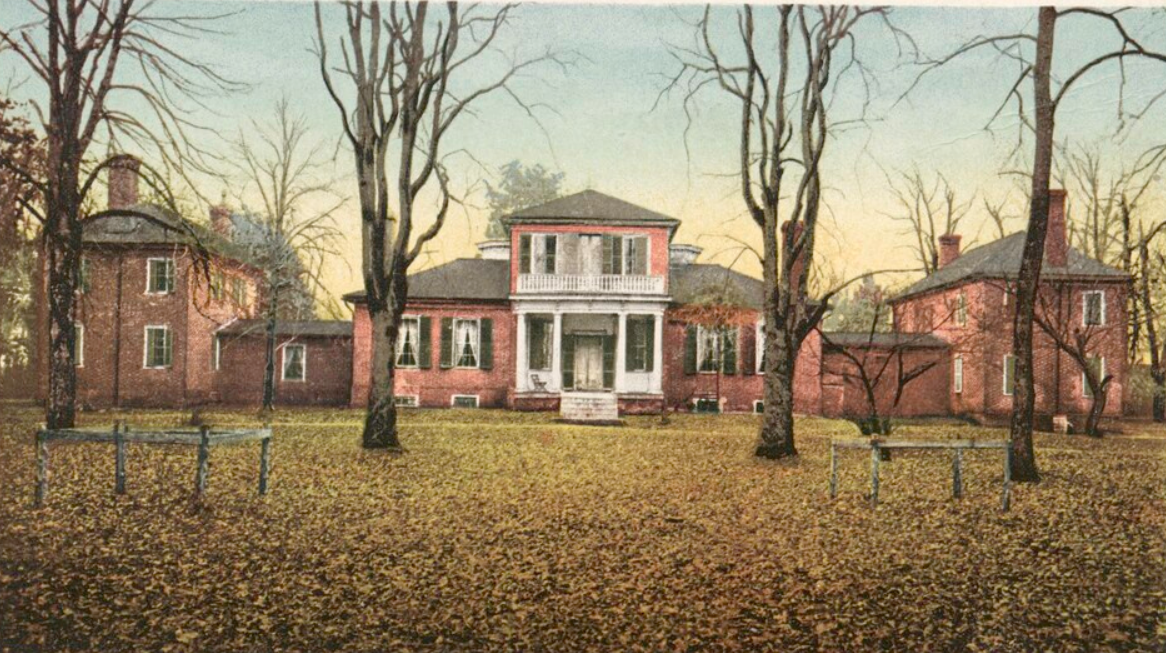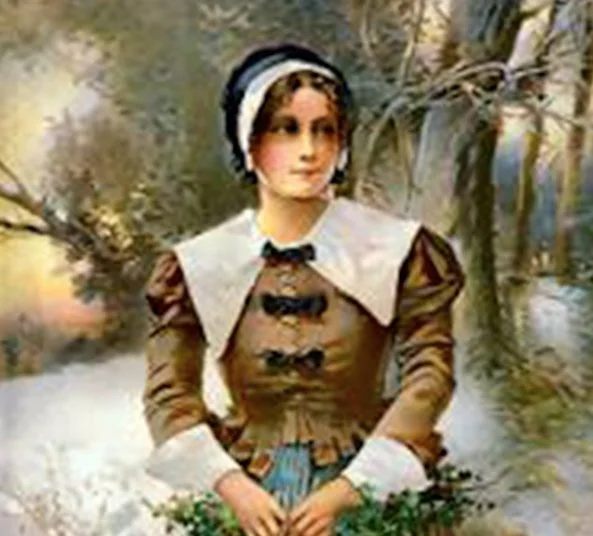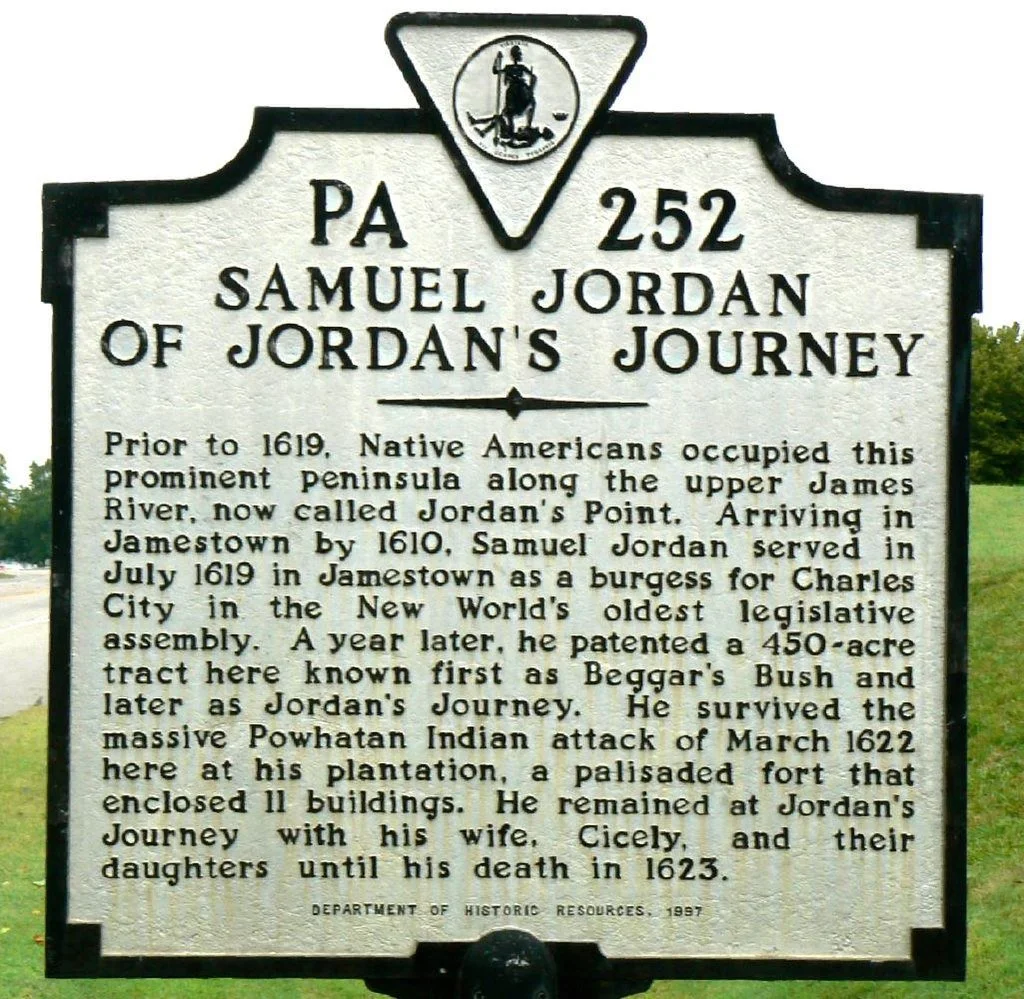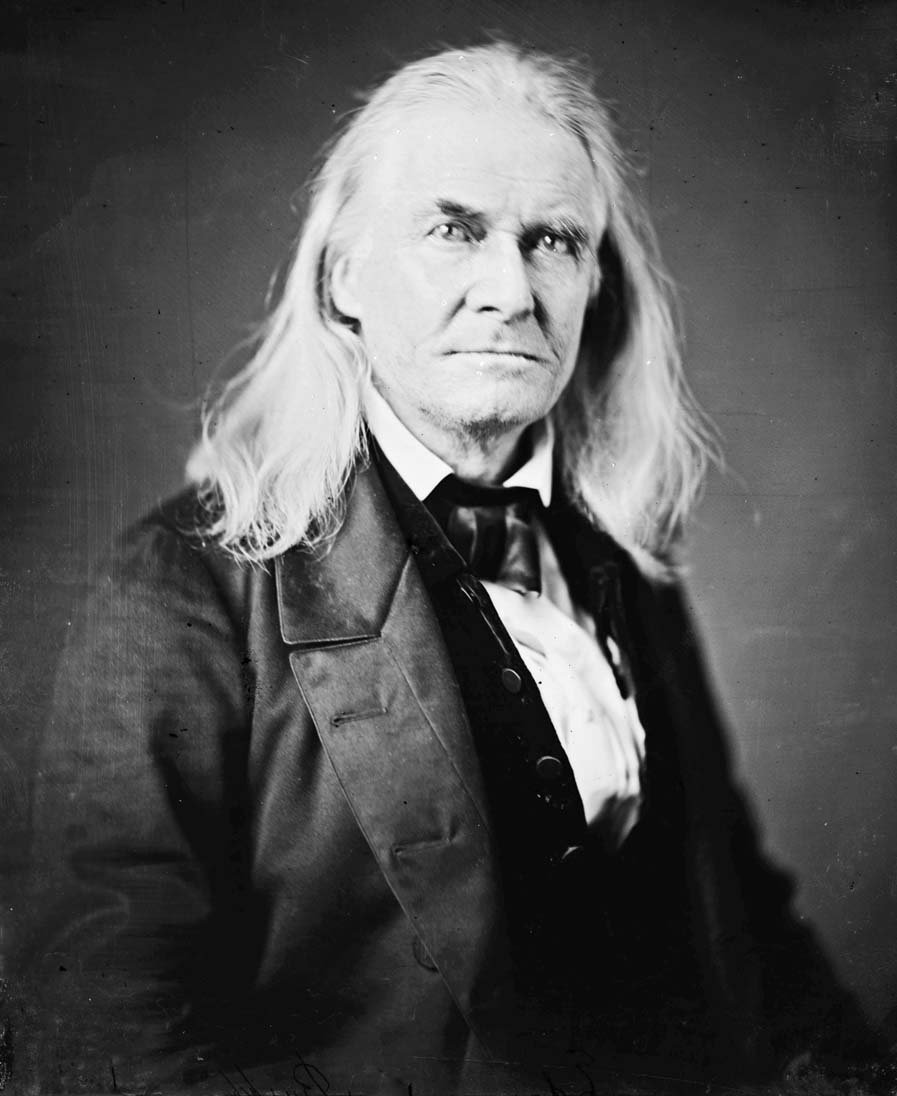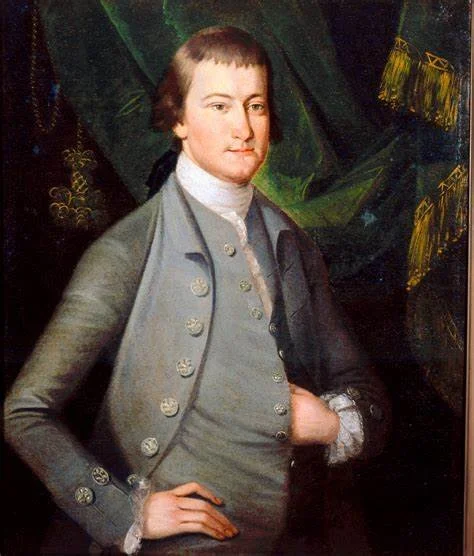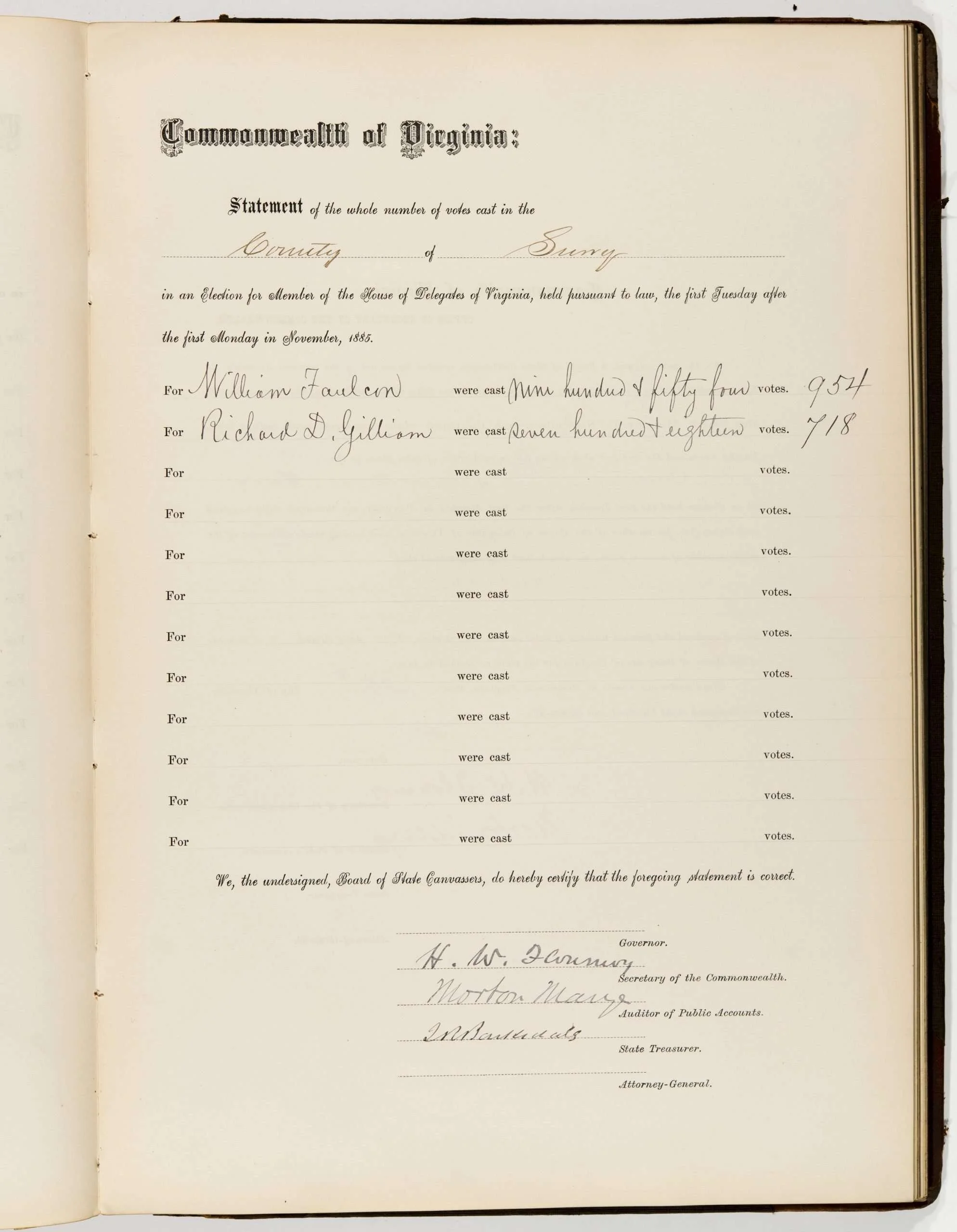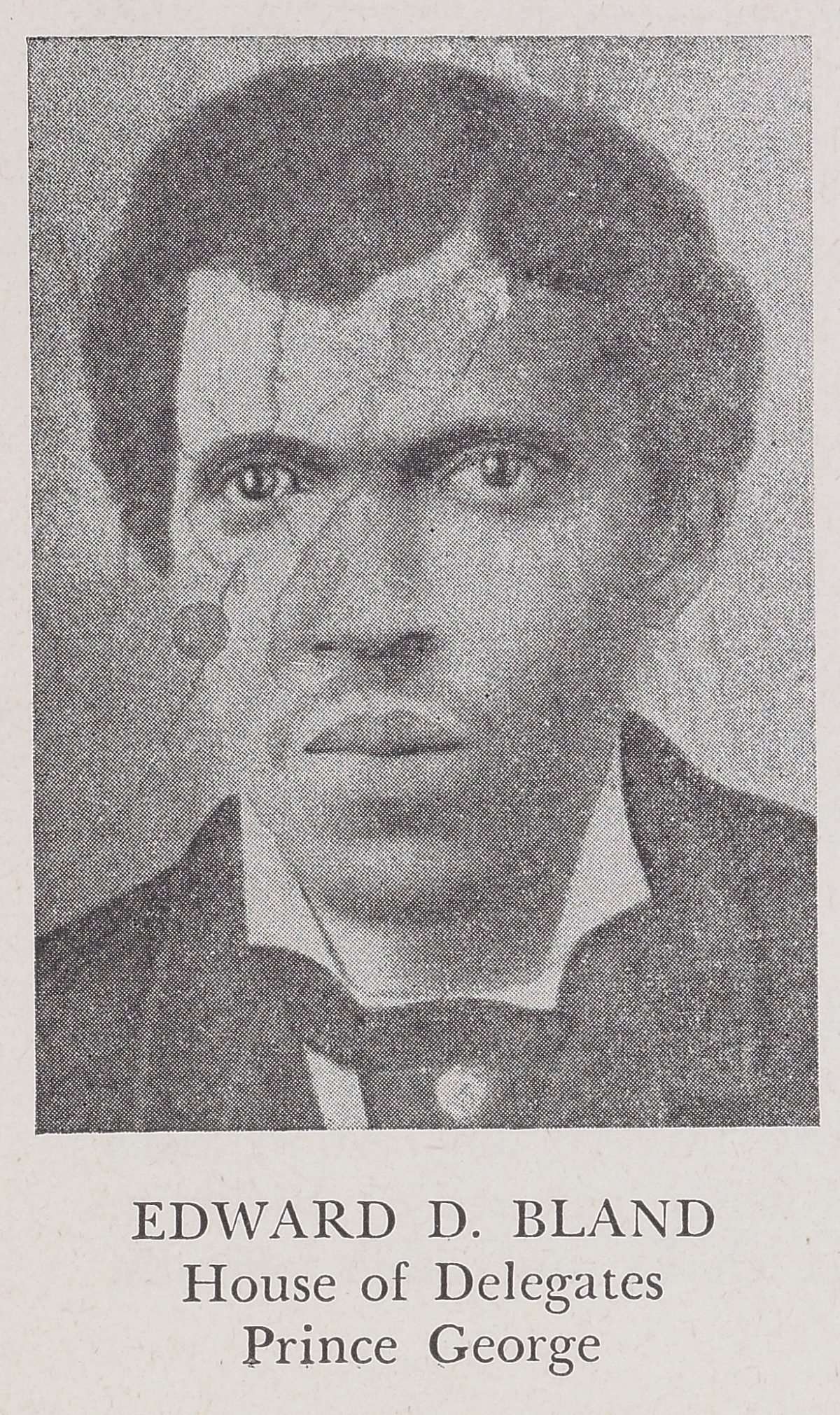Important People in Our County’s History
-
(c.1560-1632)
Captain John Martin was an original settler of Jamestown and was named to the original council designated to oversee the establishment of a settlement in the Virginia colony. In 1616, he was granted 7,000 acres along the south bank of the James River that came to be known as Martin’s Brandon Plantation. After Martin’s death in 1632, the plantation went into the care of his grandson Captain Robert Bargrave, who divided and sold it to three different English merchants. Eventually, the Harrison family of Virginia took over the plantation.
-
(1590-1628)Temperance Flowerdew was born in Norfolk, England. Then married to Richard Barrow, she arrived in Jamestown in 1609, just before the winter known as the “Starving Time.” She married George Yeardley in 1618, shortly before he was appointed to three years as governor of Virginia. In 1627, Yeardley died and Temperance became one of the wealthiest women in North America. She remarried to Yeardley’s successor, Governor Francis West, in 1628. However, she died later that year, with the property of Flowerdew Hundred being divided among the three children she had with Yeardley.
-
(1587-1627)George Yeardley was born in Surrey, England. He arrived in Jamestown with Sir Thomas Gates on May 23, 1610. From 1616 to 1617, Yeardley served as Deputy-Governor of Virginia. In 1618, he was then appointed to three years as governor and was knighted by King James I later that year. The first meeting of the House of Burgesses convened under his governance, and the first enslaved Africans arrived in Jamestown while he was in office. He married Temperance Flowerdew in 1618. Around 1618 or 1619, Yeardley patented the land for Flowerdew Hundred Plantation in what is today Prince George County. There, he became one of the first slaveowners in North America. In 1621, he had an English post windmill constructed on the property, making it the first windmill in North America. He died in 1627 at the age of 39 or 40.
-
(d. 1623)
Born in England, Samuel Jordan arrived in Virginia around 1610. He served as Burgess for Charles City County in 1619 for the first meeting of the House of Burgesses. Some point before 1620, he married Cecily Jordan. In 1620, Jordan patented 450 acres of land, 200 acres from both Samuel and Cecily’s claim as ancient planters and another 250 from paying for the transportation of five indentured servants, at Jordan’s Point. There, he established Beggars Bush, which later became known as Jordan’s Journey. The settlement later became a place for refuge for the survivors of the 1622 attacks by Virginia Indians. Jordan died in 1623.
-
(c.1600 -c.1631)
Born in England, Cecily Jordan arrived in Virginia around 1610 as a child. She married Samuel Jordan before 1620 and helped with the establishment of Jordan’s Journey. After Samuel’s death in 1623, she was authorized to settle her husband’s estate. Cecily began to contract herself to William Farrar, meaning she intended to marry him. Reverend Greville Pooley, however, claimed to have proposed marriage to Cecily and claimed that she had accepted his offer. He then launched the first breach of promise suit in North America, which was also the first where the defendant was a woman. Pooley eventually withdrew his complaint as the case was resolved in Cecily’s favor. She married William Farrar in 1625. The last time she is mentioned is a record from 1631, and it is unknown exactly when she died.
-
(1653-1708)
George was born in Copenhagen, Denmark as the younger son of the Frederick III, King of Denmark and Norway. He married Princess Anne of Great Britain in 1683. Anne’s sister Mary and her husband William ascended to the throne as joint monarchs in 1688 after the Glorious Revolution. George was naturalized as a British citizen in 1689. William and Mary never had children, and, after William’s death in 1702, Anne became Queen of Great Britain. Prince George was then consort to the British monarch. In 1702, the General Assembly of Virginia decided to divide Charles City County at the James River. The lands south of the river became known as Prince George County in 1703, after the Queen’s husband. George died in 1708, but his legacy lives on in the county that still bears his name.
-
(1710-1776)
Richard Bland was born at his family’s plantation at Jordan’s Point, and he inherited the property at only ten years old. He received his education at the College of William and Mary, becoming a prominent intellect and statesmen. Bland represented Prince George County in the House of Burgesses from 1742 to 1775 and served as a Virginia delegate to the First (1774) and Second (1775) Continental Congresses. In 1766, he wrote “An Inquiry into the Rights of the British Colonies,” described by Thomas Jefferson as groundbreaking in analyzing the relationship between the American colonies and Great Britain. After Virginia created its constitution and abolished the House of Burgesses, Bland was elected to the newly formed House of Delegates in 1776. However, on October 26, 1776, he collapsed and died on Duke of Gloucester Street in Williamsburg and was later buried at Jordan’s Point. Upon his death, Thomas Jefferson acquired much of Bland’s personal library. This ended up being a part of the library Jefferson donated to the federal government to create the Library of Congress. Richard Bland College of The College of William and Mary was created in 1960 and named after the prominent Prince George patriot.
-
(1794-1865)
Edmund Ruffin was born at Evergreen Plantation in Prince George County. He enlisted as a private in the Virginia Militia during the War of 1812, but he only served as a secretary and never saw battle. In 1813, he married Susan Hutchings Travis and moved to his own plantation located at Coggins Point in Prince George County. In 1832, he published “An Essay on Calcareous Manures,” which helped to introduce a strong wave of agricultural reform in the Antebellum South. Ruffin promoted the use of marl, a material rich in calcium carbonate and clays and silts, to help replenish the overworked and depleted soils of the American South. As he shared his agricultural ideas, he began to also share his thoughts on slavery. He eventually became a radical supporter of slavery and an outspoken secessionist. After Abraham Lincoln’s election to the presidency, Ruffin moved to South Carolina where his radical ideas were supported more than in Virginia. Legend states he fired the first shot at Fort Sumter, which is likely untrue. However, he was likely one of the first people to enter the fort upon its surrender. At the war’s end in 1865, Ruffin declared that he could not live under “Yankee rule,” wrapped himself in a Confederate flag, and shot himself at his son’s plantation home in Amelia County.
-
(1824-1896)
Richard Eppes was born in City Point on his parents’ estate. He attended William and Mary and the University of Pennsylvania, where he received a medical degree in 1847. His mother owned the Appomattox Manor estate, and when her estate was settled in 1851 after her 1844 death, Eppes took control. He abandoned his medical practice and became a full-time plantation owner, owning nearly 2,300 acres of land and 130 enslaved persons. He was a stark proponent of slavery, but he did not support seceding from the Union. When the Civil War broke out, Eppes enlisted in the 3rd Virginia Cavalry, but eventually hired a substitute to complete the rest of his duty. In 1862, he moved his family from Appomattox Manor to Petersburg. A Union raiding party landed at City Point only a few days later, taking most of Eppes’s slaves with them. For the remainder of the war, he served as a civilian contract surgeon in Petersburg, helping many of the wounded during the Siege of Petersburg. Eppes’s home, Appomattox Manor, was used by General Ulysses S. Grant as headquarters during the attack on Petersburg. After the war, he had to buy back Appomattox Manor from the government, and he had full control of his previous property by 1866. Eppes is best known for his incredibly detailed journals describing life in the Antebellum South, as well as life after the Civil War.
-
(c.1825-1897)
Born in Prince George County, Virginia, Randolph grew up enslaved to Carter H. Edloe with his mother and four siblings while his father was held by George Harrison in an adjoining plantation. Exceptional among enslaved populations, and unlike Edloe's other enslaved men and women, Randolph could read and write. His literacy proved instrumental in securing his and their freedom. Edloe's will directed his estate to first pay his debts, and then "to raise a sufficient sum to pay for the transportation of my Slaves to any Free State or Colony which they may prefer."
Listening to the leaders of the Anti-Slavery society, Randolph saw a missing element to their argument: "I saw at once what was the difficulty: the thing needed was more definite knowledge in regard to the masters and their slaves. This I felt I could supply from my experience in the South as a slave." In 1855, he published The Sketch of a Slave life, or, an illustration of the peculiar institution to prove " 'that slaves, when liberated, can take care of themselves, and need no master or overseer to drive them to their toil.'"
However, the will executor kept Randolph and the 79 others enslaved well beyond the period of his Edloe’s passing. Once Randolph learned of the will’s contents and read it himself, he then helped obtain a lawyer to plead their case. After over three years of being unjustly kept in slavery, a magistrate successfully secured Randolph and the others their free papers and passage to Boston, making their way by ship on September 5, 1847.
Members of the Massachusetts Anti-Slavery Society helped Randolph and others acclimate to life in Boston and he would return the favor. As soon as he was able, he made donations and shelter available for at least three asylum seekers: "Jn'o R Jones," Alexander Perkins, and Richard Howard.
-
(c. 1841-1893)
William Gilliam served in the House of Delegates from 1871 to 1875. He represented Prince George County, where he was born to a free African American couple. Gilliam was a farmer who owned a four-acre tract of land on the outskirts of Petersburg; he was elected to the first of two consecutive terms in the House of Delegates in 1871. Identified in newspaper reports as a Radical Republican, Gilliam was active in the assembly and introduced numerous bills, although only one—authorizing a Prince George County business to construct a pier on the James River—passed. When he ran for a third term in 1875, some ballots in his district were lost and others were not reported; his Conservative opponent was declared the winner and seated despite Gilliam’s request for a recount. After this, Gilliam appeared to withdraw from partisan politics. He moved with his family to New York City, where he died in 1893.
-
(1840-1929)
Goodman Brown was born free in Surry County in 1840, a member of three generations of free men. At the age of 22, Goodman Brown enlisted in the U.S. Navy as a cabin boy aboard the USS Maratanza during the American Civil War. He was discharged December 20, 1864. A farmer, he attended night school and was later instructed by his wife, one of the first African American school teachers in Surry County. He represented Prince George and Surry Counties in the Virginia House of Delegates from 1887 to 1888, where he served on the House Immigration and the Retrenchment and Economy Committees. He died July 4, 1929, in Surry County and is buried near Bacon's Castle.
-
(c. 1841-c. 1904)
William Faulcon was born in 1841 in Surry County, probably into slavery and likely of mixed-race ancestry. After the Civil War he operated a blacksmith's shop. He began purchasing land in Surry in 1879, eventually acquiring ninety acres. Little is known about how he became involved in politics, but local Republicans nominated him for the House of Delegates in 1885. Faulcon won the seat handily, representing Surry and Prince George Counties, but he did not present legislation or speak on the record during the term's first session. He submitted a few bills on behalf of Surry County residents during the extra session. Faulcon was the Republican nominee for the seat in 1891, but he withdrew from the race before election day. He died on an unknown date probably not long before April 9, 1904, when the Surry County Court ordered the appraisal of his estate.
-
(c. 1845-1917)
Born on Flowerdew Hundred, Emmanuel was the son of enslaved parents, Emmanuel and Keziah. Manuel served William McGowan Willcox as a body servant in the American Civil War. After the war, he returned to Flowerdew Hundred and eventually became the cook and caregiver for the children. Manuel married Catherine Fields of Petersburg and, it is believed, had 12 children of which only five survived. He died in 1917 and is buried in East View Cemetery in Petersburg. Manuel was remembered in at least two of the Willcox wills, as well as in several of their diaries and papers.
-
(1848-1927)
Edward David Bland was born a slave in Dinwiddie County in 1848. Bland came to Petersburg following the Civil War and attended night school. About 1874, he moved to City Point in Prince George County, where he worked as a shoemaker. Bland represented Prince George and Surry Counties in the Virginia House of Delegates from 1879 to 1884, where he served three terms and was a member of the House Committees on Executive Expenditures, on Schools and Colleges, on Agriculture and Mining, as well as many others. Bland was known for helping to forge an alliance between African American Republicans and the Readjuster Party. Bland died in 1927 and is interred at the People's Memorial Cemetery in Petersburg.

